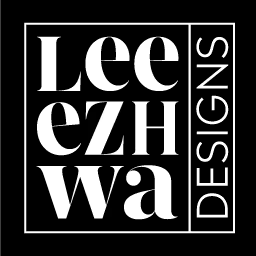It’s Not About Logos
When people hear “branding,” they think logos. Fonts. Colors. The surface layer.
And sure, branding uses those tools. But branding isn’t about logos. Branding is about transformation.
The first time I built a brand from scratch, I realized I wasn’t just designing visuals. I was reshaping perception. I was taking something invisible and making it undeniable.
And once you understand branding that way, it stops being decoration. It becomes destiny.
The Problem: Branding as Decoration
Most people still treat branding as surface:
Companies update logos as if it will magically fix their reputation.
Startups pick trendy fonts instead of clarifying their identity.
Agencies pitch “visual refreshes” when what’s needed is narrative transformation.
The result? Pretty brands that nobody remembers.
What stats say:
- A Lucidpress report found that consistent, strategic branding increases revenue by 33% on average.
- Yet, 60% of companies surveyed admitted they had no clear brand strategy, only visuals.
- McKinsey reports that brands with strong identity outperform their competitors by 20% in customer loyalty.
Logos don’t move markets. Transformation does.
Personal Anecdote: Norigami
When I built Norigami, my food concept in London, I wasn’t just selling food. I was branding transformation.
The challenge? Launching a new brand in one of the world’s toughest food markets. A thousand stalls, a thousand options. Why should anyone notice us?
I didn’t start with the menu. I started with the story: a brand that married Japanese minimalism with street-food boldness. I obsessed over every touchpoint: the logo, the packaging, the menu flow, even how the food was handed over.
Investors walked in and said: “This feels polished. This feels bigger than a stall. This feels like it belongs.”
That wasn’t about pretty graphics. It was about transformation, turning a food stall into an undeniable brand.
Framework: Branding as Transformation
Here’s how I think of branding now:
Identity First. Who are you really? Branding forces clarity.
Perception Shift. How do you want people to feel before and after?
Consistency. Every touchpoint must reinforce the story.
Experience. Branding isn’t static. It’s lived.
Transformation. The true test: does the brand change how people see you, and how you see yourself?
Because branding isn’t about what it looks like. It’s about what it does.
Data: Why Transformation Matters
For Startups:
CB Insights found that 42% of startups fail because they misread market perception. Branding is the cure for that gap.
For Corporates:
Edelman’s Trust Barometer shows that 81% of consumers need to trust a brand before buying from it. Logos don’t build trust. Transformation does.
For People:
LinkedIn’s research on personal branding shows that professionals with consistent personal brands receive 23x more profile views and 10x more connection requests.
Branding is perception. Perception is transformation.
ADHD and Branding as Identity Work
For me, ADHD makes branding personal.
- ADHD often comes with identity struggles: impostor syndrome, masking, constant reinvention.
- Branding is a way of stabilizing identity. Not by faking it, but by articulating it clearly.
- My restless brain doesn’t just want to make logos. It wants to build systems of meaning.
Branding lets me channel that restless energy into clarity, for myself and for my clients.
Actionable Takeaways
If you want to brand for transformation, not decoration:
Start With the Story.
Ask: what change do we want to create in people’s minds?
Design the Before & After.
Literally map: “Before interacting with us, people think ___. After, they think ___.”
Audit Touchpoints.
Every element: site, deck, email signature must reinforce the shift.
Test the Transformation.
Ask your audience how they see you. Did the brand change it?
Use Branding Internally.
Remember: branding isn’t just for customers. It transforms teams by giving them purpose.
Conclusion: Logos Fade. Transformation Lasts.
The power of branding isn’t in colors or fonts. It’s in the transformation it creates.
Transformation in how people see you. Transformation in how you see yourself. Transformation in the space between, trust, identity, connection.
So stop asking: “How should this look?” Start asking: “What must this transform?”
Because pretty fades. Transformation sticks.
Still Hungry?
Don’t stop here. If this post lit a spark, you’ll want to dive into more ideas cut from the same cloth, sharper thinking, bolder design, and zero fluff.
The Day I Fired My “Inner Impostor Boss”
How ADHD magnifies impostor syndrome and what it takes to shut it down.
From Corporate Costume to Thin Creative Skin
Why hiding behind conformity kills originality and how authenticity is your new armor.
Permission Slips for Reinvention - Why no one else is going to hand you one.
Stop waiting for diplomas, managers, or permission... write your own slip.


